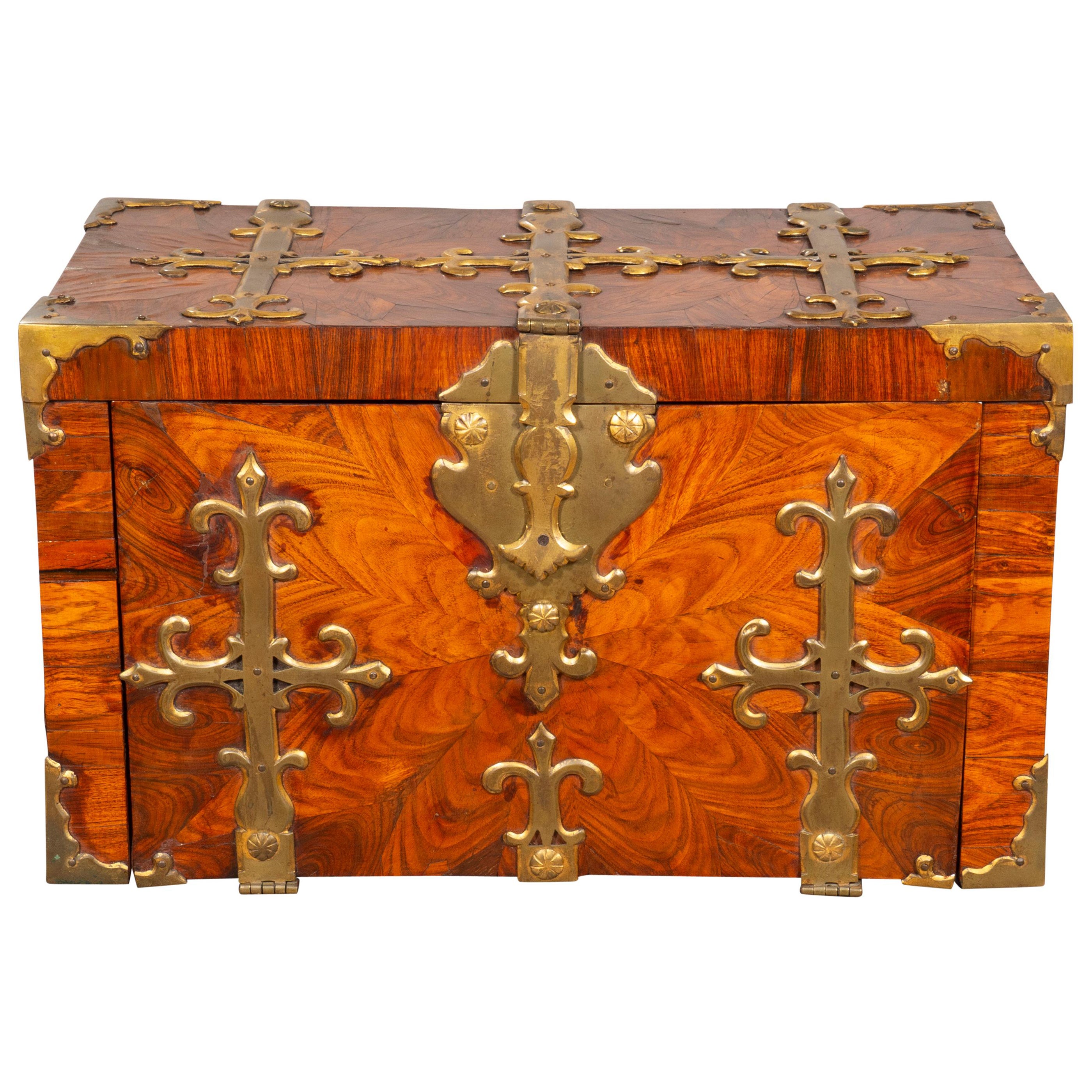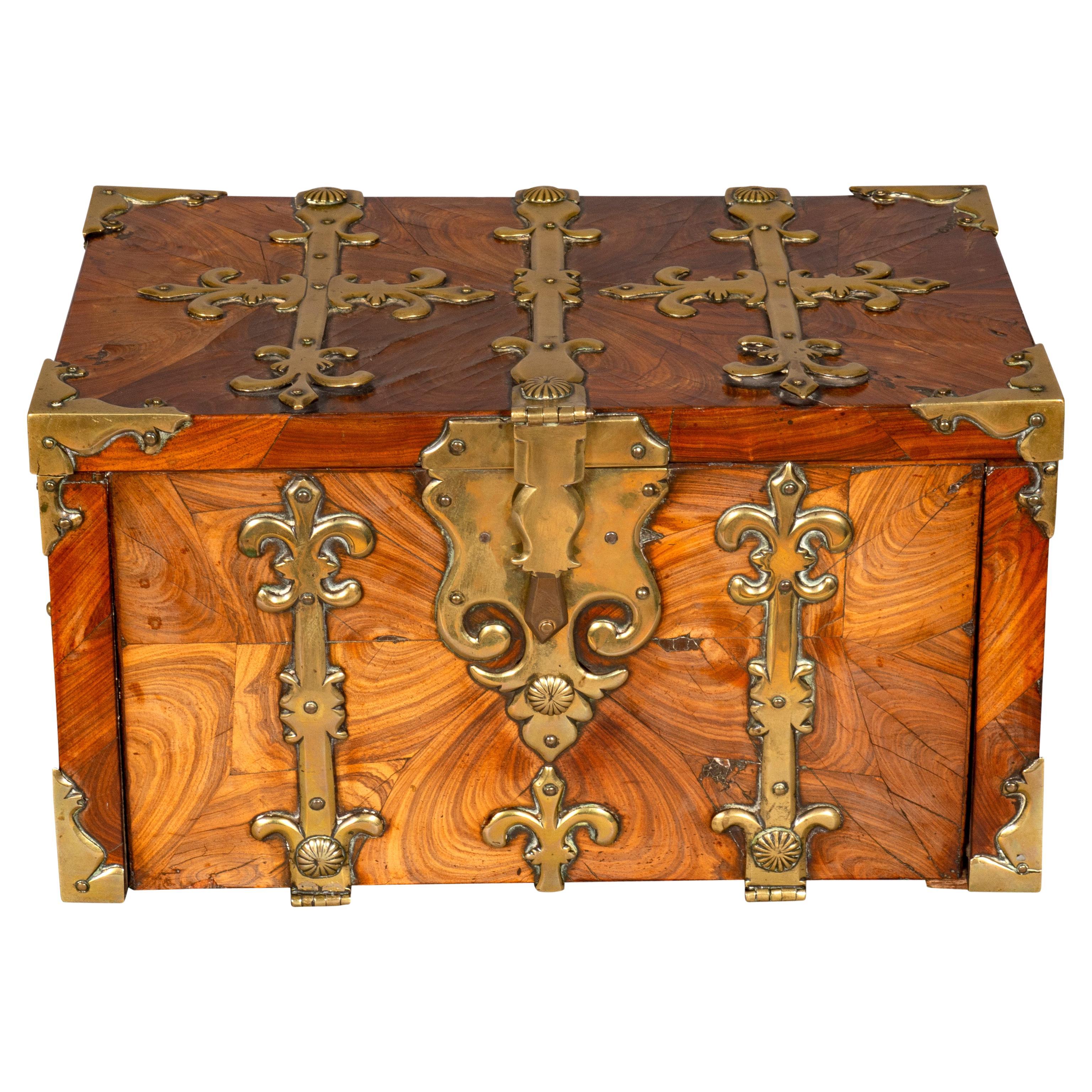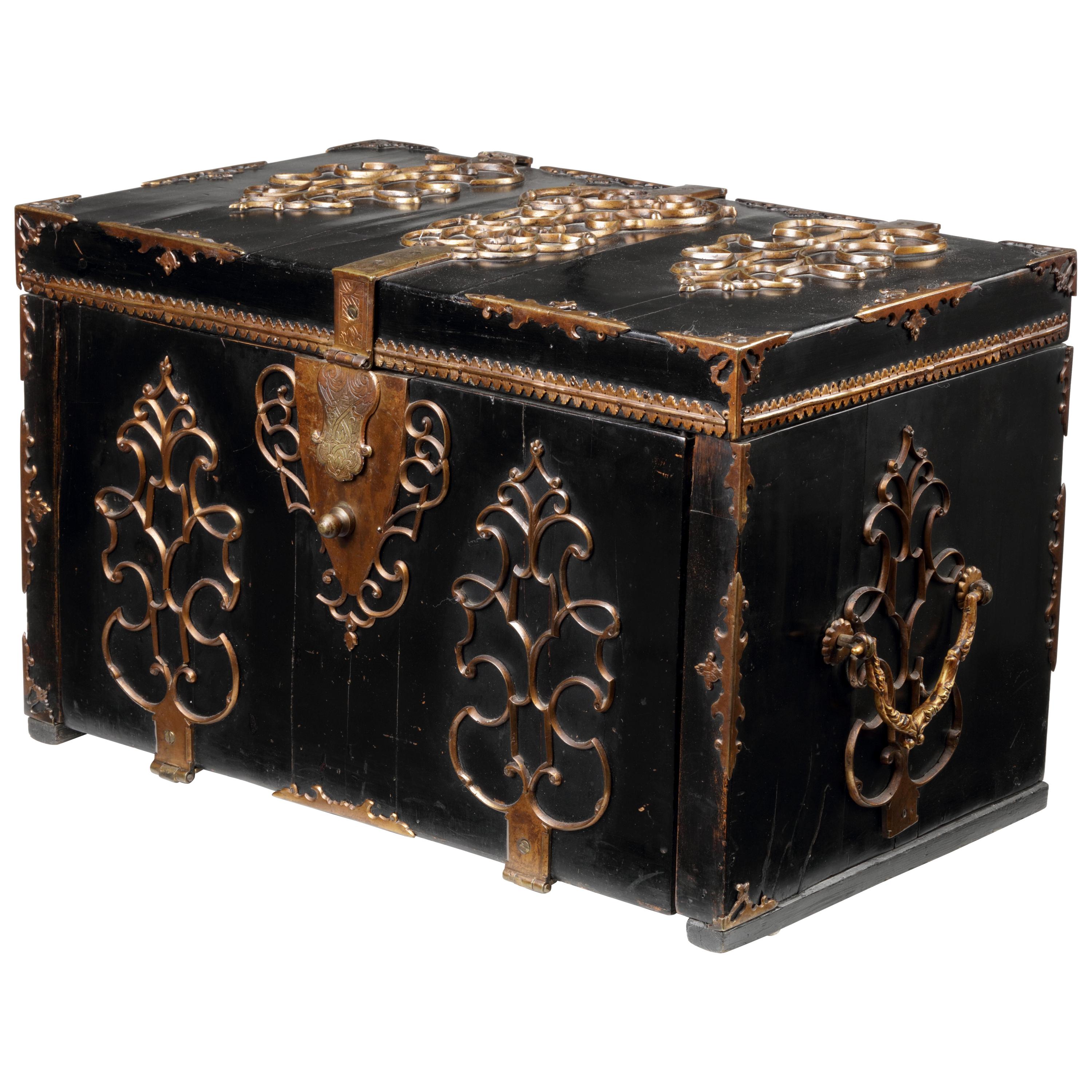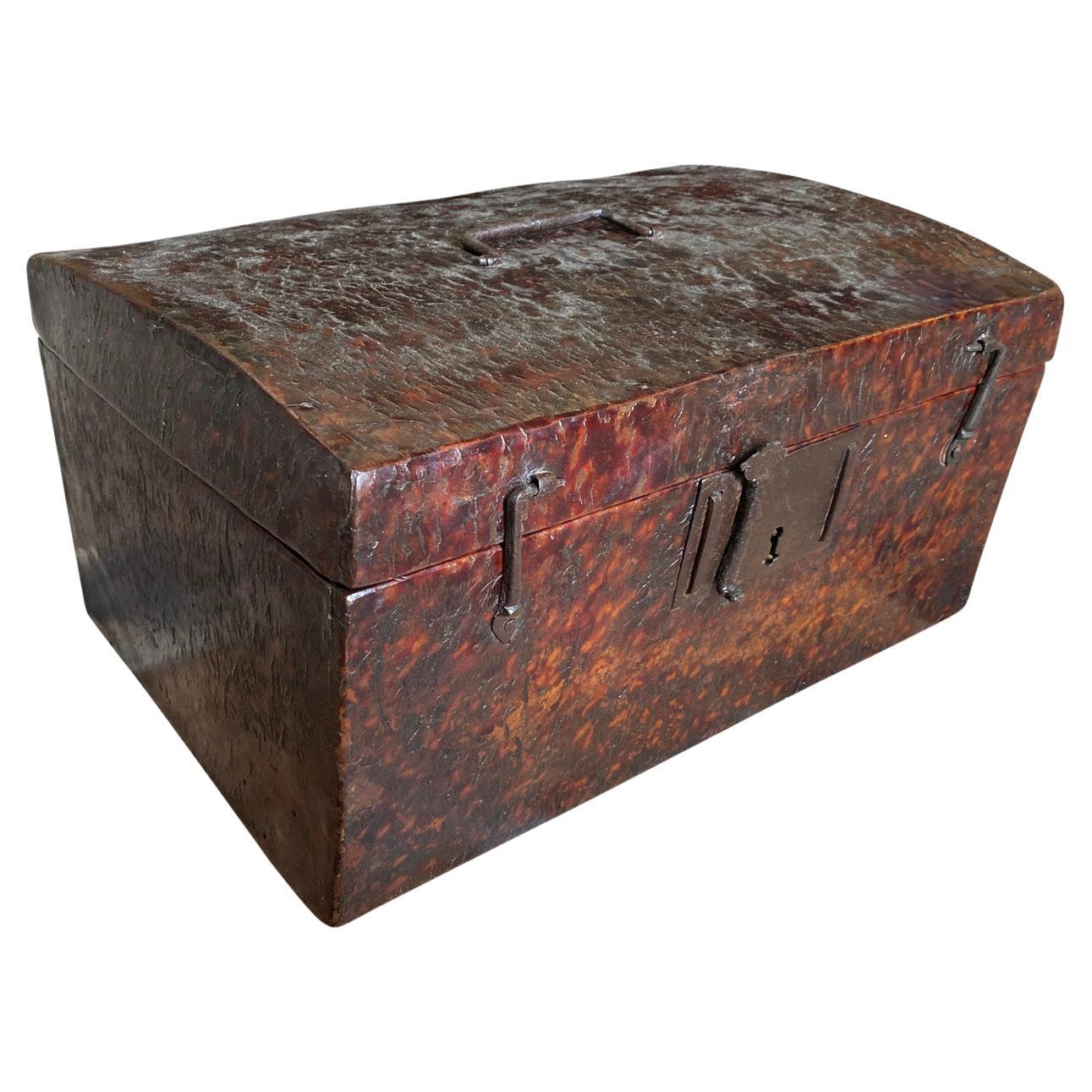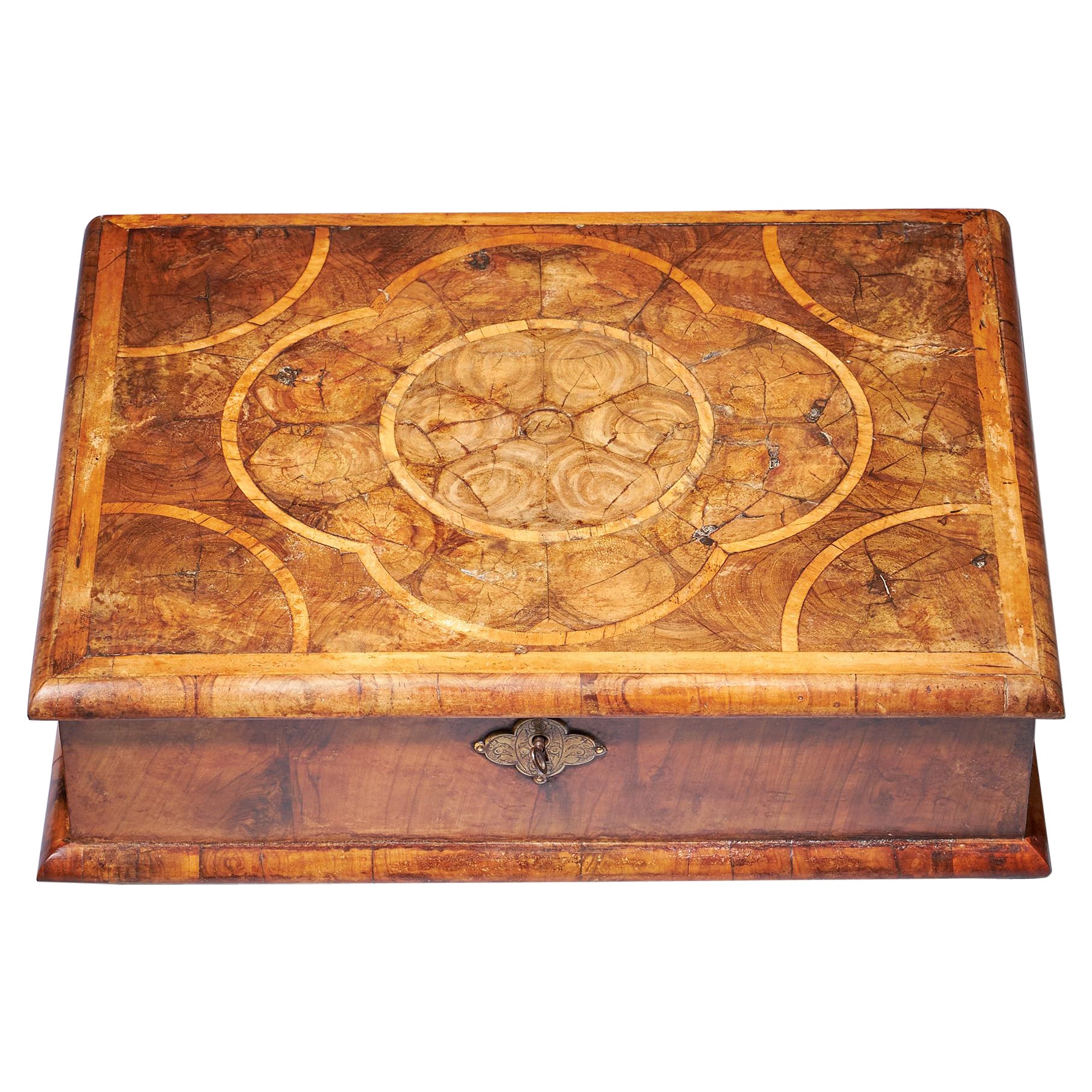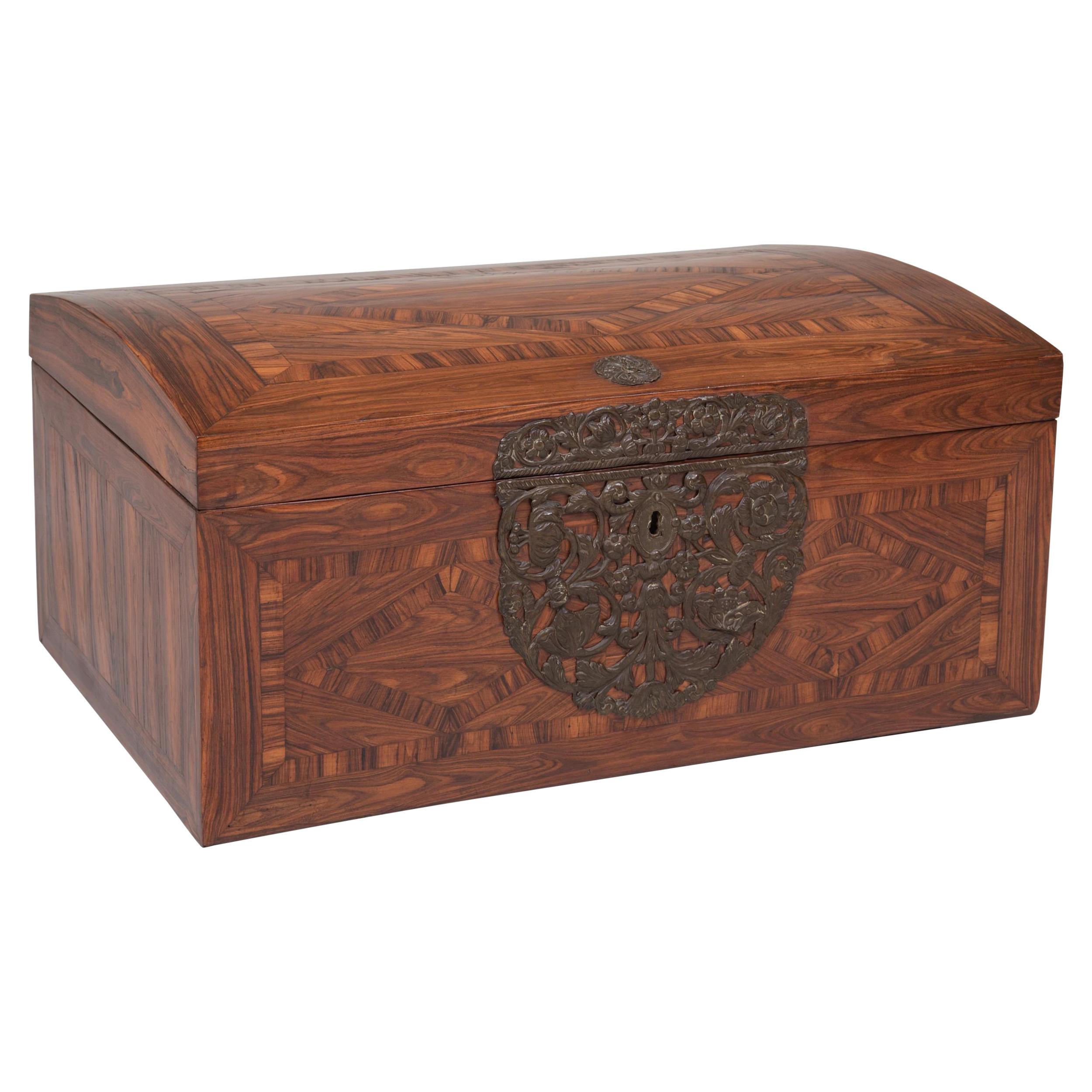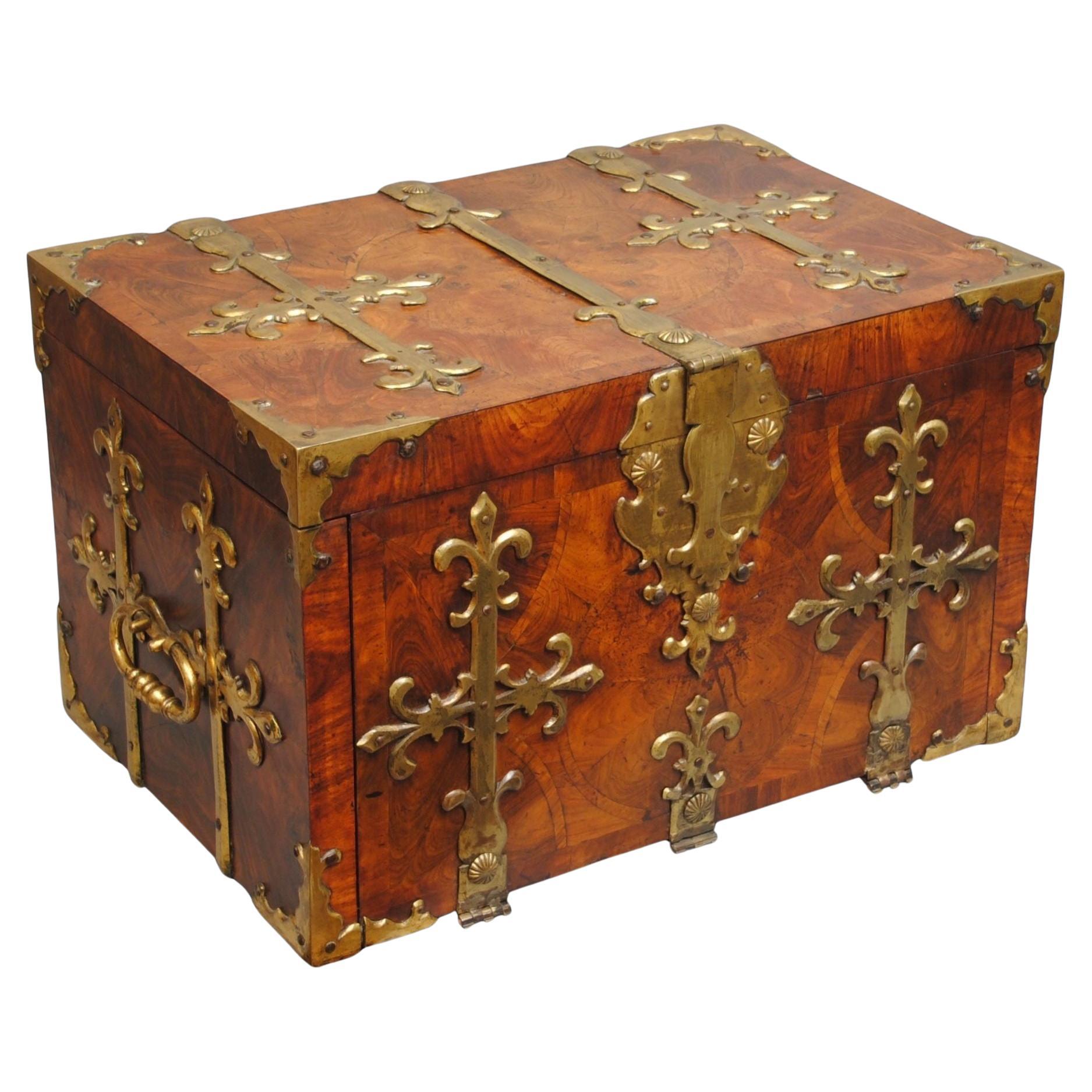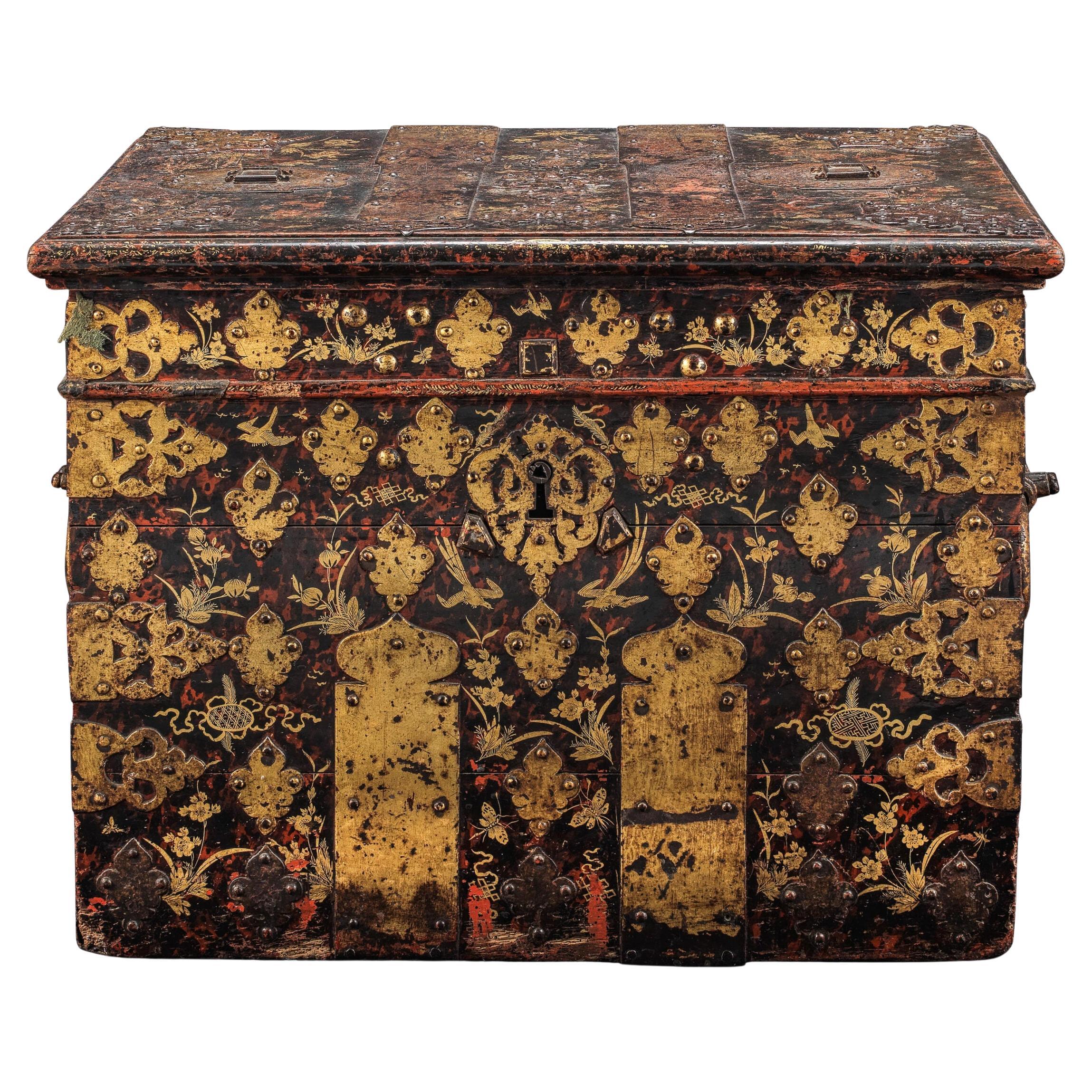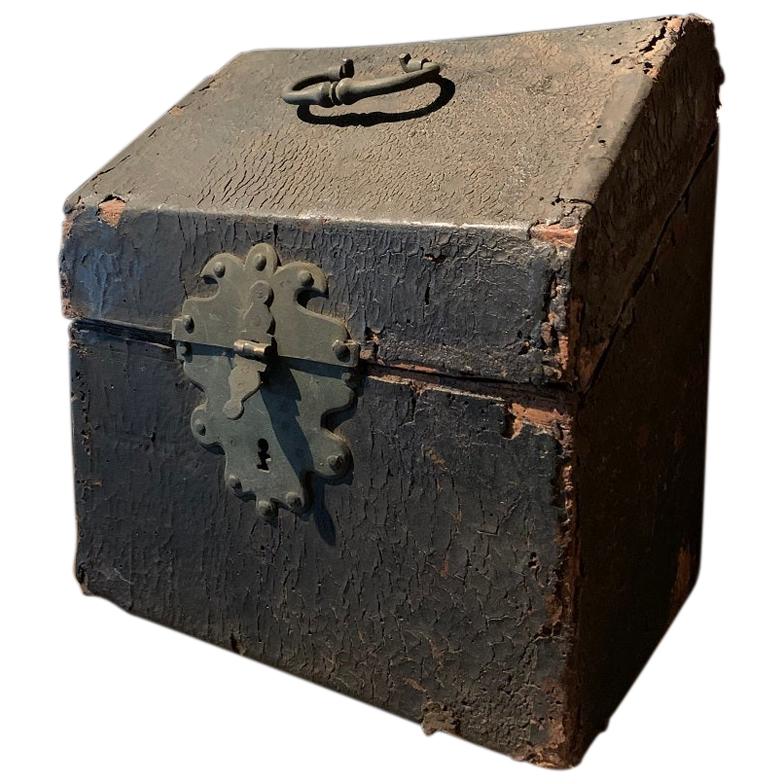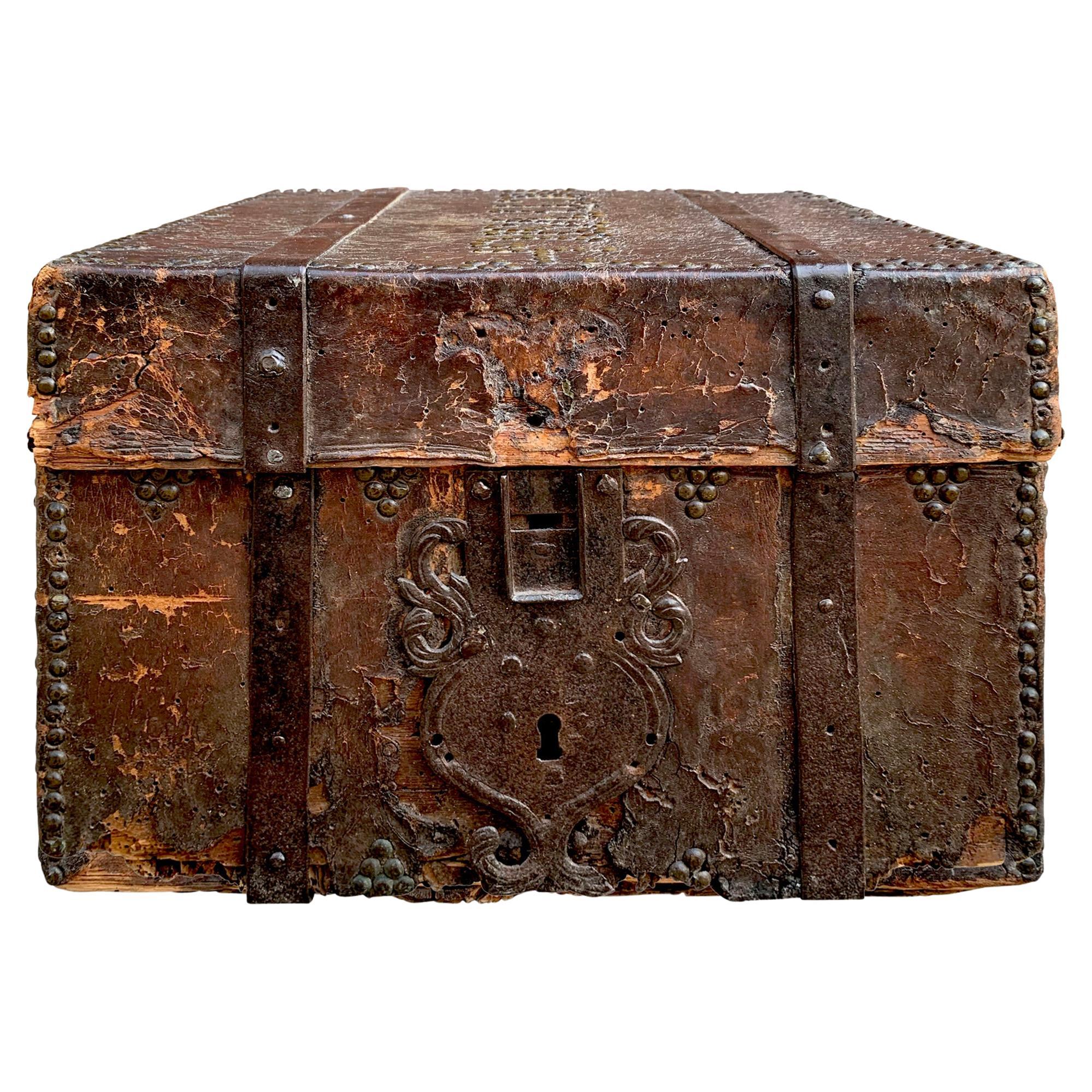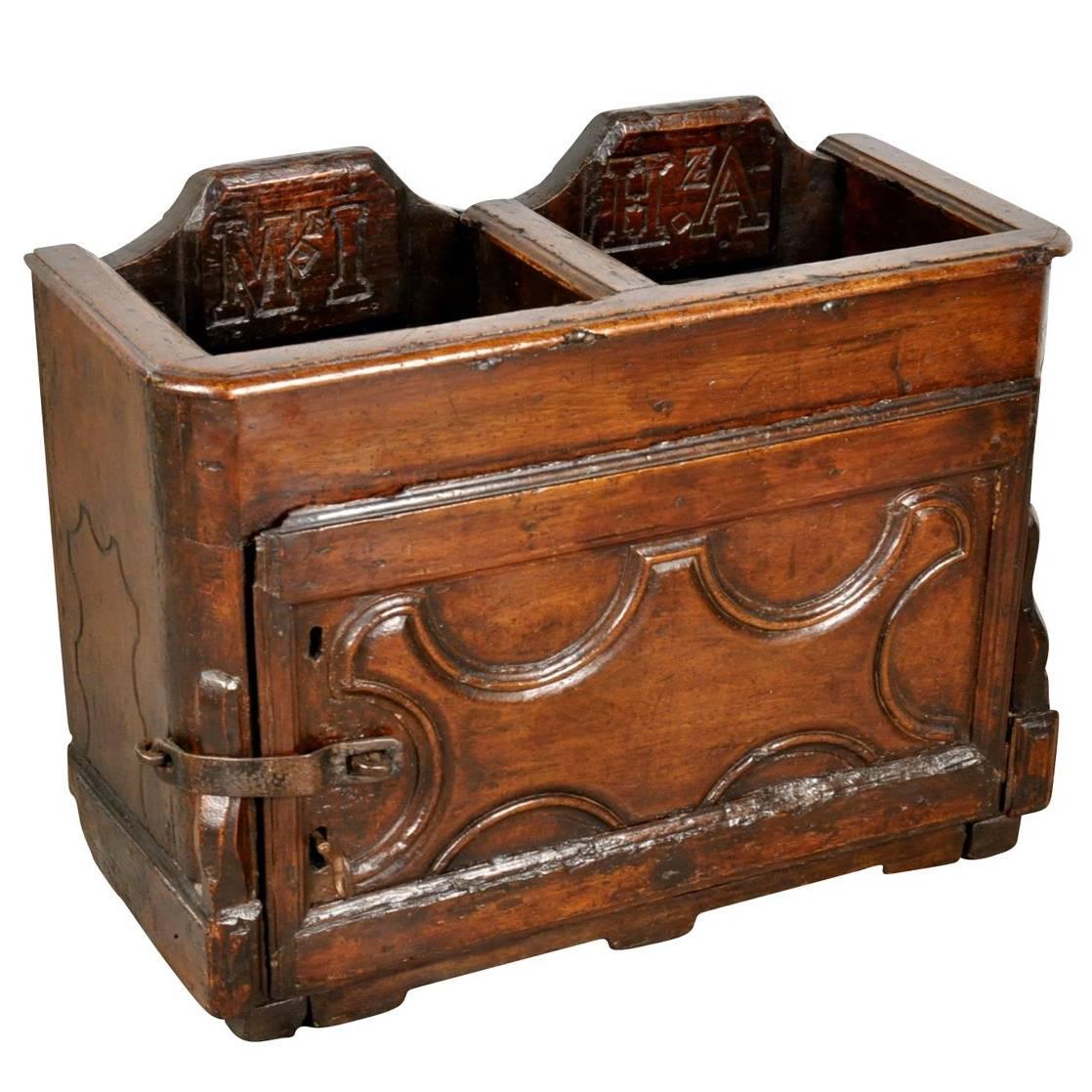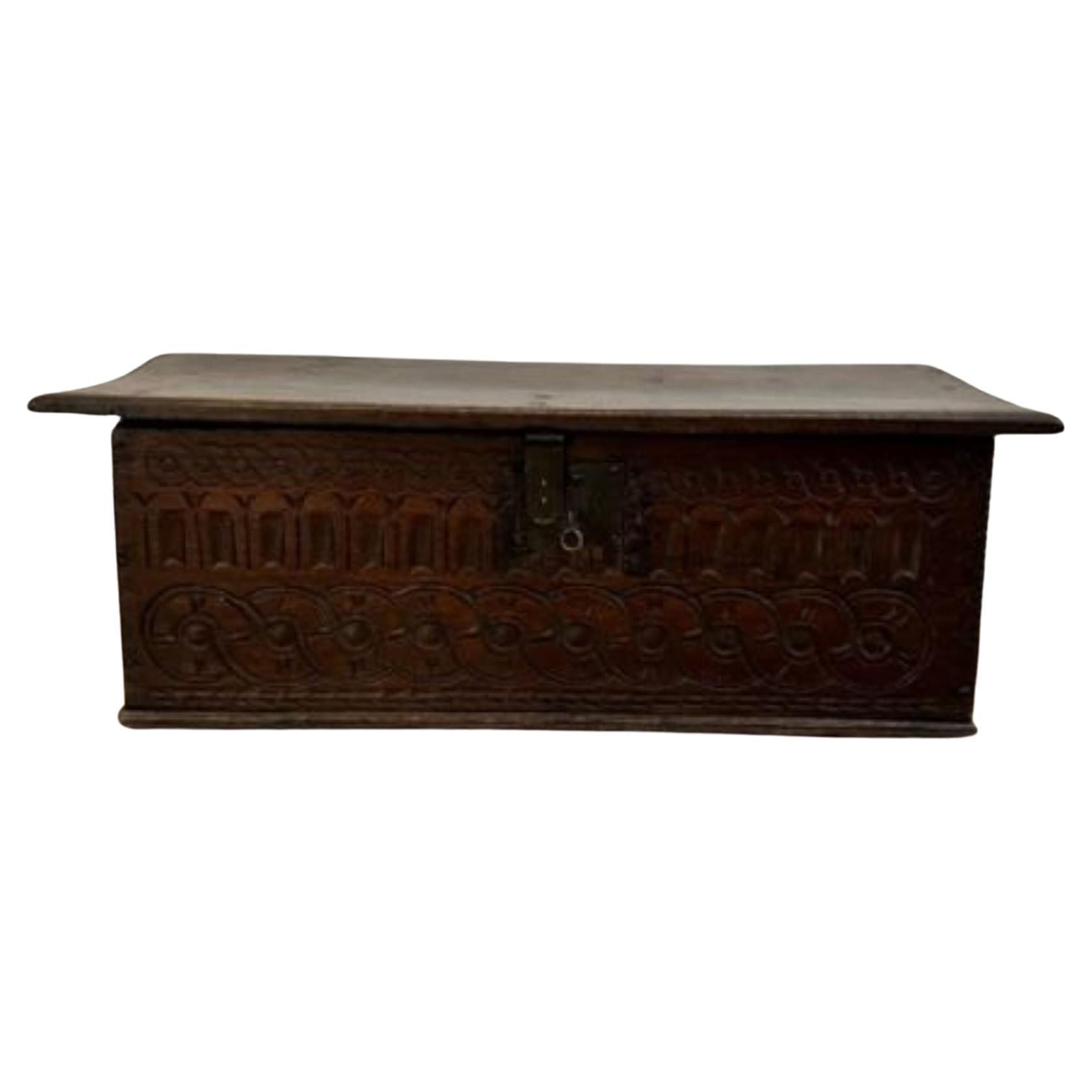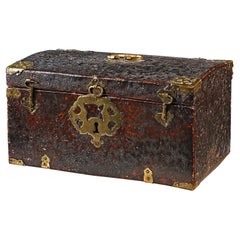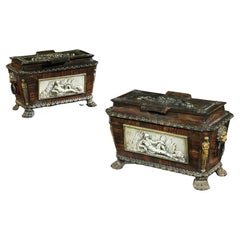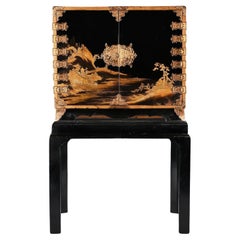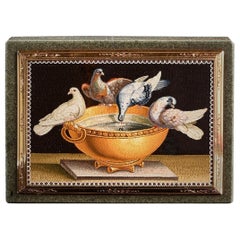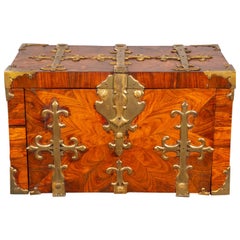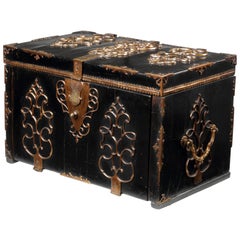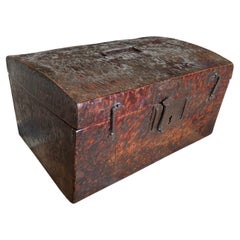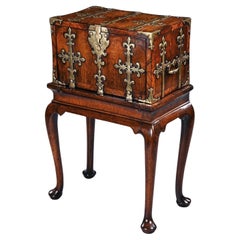
17th Century William and Mary Period Kingwood Strong Box / Coffre Fort on George
View Similar Items
Want more images or videos?
Request additional images or videos from the seller
1 of 14
17th Century William and Mary Period Kingwood Strong Box / Coffre Fort on George
Price:$18,490.97
$20,956.43List Price
About the Item
- Dimensions:Height: 33.86 in (86 cm)Width: 24.02 in (61 cm)Depth: 14.18 in (36 cm)
- Style:William and Mary (Of the Period)
- Materials and Techniques:
- Place of Origin:
- Period:
- Date of Manufacture:Circa 1690-1710
- Condition:Wear consistent with age and use.
- Seller Location:Benington, GB
- Reference Number:Seller: 30551stDibs: LU1183243131842
About the Seller
5.0
Gold Seller
Premium sellers maintaining a 4.3+ rating and 24-hour response times
Established in 1969
1stDibs seller since 2015
127 sales on 1stDibs
Typical response time: 5 hours
Associations
LAPADA - The Association of Arts & Antiques DealersThe British Antique Dealers' Association
Authenticity Guarantee
In the unlikely event there’s an issue with an item’s authenticity, contact us within 1 year for a full refund. DetailsMoney-Back Guarantee
If your item is not as described, is damaged in transit, or does not arrive, contact us within 7 days for a full refund. Details24-Hour Cancellation
You have a 24-hour grace period in which to reconsider your purchase, with no questions asked.Vetted Professional Sellers
Our world-class sellers must adhere to strict standards for service and quality, maintaining the integrity of our listings.Price-Match Guarantee
If you find that a seller listed the same item for a lower price elsewhere, we’ll match it.Trusted Global Delivery
Our best-in-class carrier network provides specialized shipping options worldwide, including custom delivery.More From This Seller
View AllLate 17th Century Leather And Brass Travelling Box
Located in Benington, Herts
A very fine and interesting late 17th century English work box or travelling case
English Circa 1680
Of conventional form with slightly domed lid, this piece has acquired a magnifi...
Category
Antique 1680s English Decorative Boxes
Materials
Brass
Extremely Rare Pair of Regency Cast-Iron Sarcophagus Shaped Strong Boxes
Located in Benington, Herts
An extremely rare pair of Regency cast-iron sarcophagus shaped strong boxes.
Regency, circa 1820
Painted to simulate palisander wood and with parcel-gilt, the cavetto-moulded hinged lids cast with flower sprays above foliate-cast bands over front panels relieved with river gods within canted corners cast with standing muses, the sides with lion mask and ring handles over leafy aprons on massive lion’s paw feet; the Brahmah type lock stamped “T. Davis from London” and impressed with the Royal Crown.
These extraordinary pieces are modelled on Regency wine coolers. The forms are classic Greco-Roman revival with the boat-hook handles, mythic figures and the overall sarcophagus pattern.
You would struggle to find one let alone a pair. Good items for any collection.
Research on going into these strong boxes but we have found possible information on the lock stamped Davis….(historyoflocks )
The relationship of King George III and George Davis of Windsor, who was locksmith in ordinary to His Majesty. Davis, in 1799, invented and patented a unique style of lock, which was also beautifully engraved with a warning not to make duplicate keys. Sensitive government secrets always demanded, then as today, locks that were state of the art. Davis locks ended up on government dispatch boxes...
Category
Antique Early 19th Century English Regency Commodes and Chests of Drawers
Materials
Iron
$21,812 Sale Price
35% Off
An Important Late 17th Century Japanese Lacquered Cabinet Edo Period on Stand
Located in Benington, Herts
An extremely fine, elegant and rare late 17th Century Japanese lacquer cabinet, from the Eco period, on later lacquered black stand.
Japanese circa 1690
Provenance
A private Scottish collection
This outstanding cabinet is a fascinating fusion of east and west. The cabinet itself would have been made in Japan, c.1690, and is decorated to the outside with hiramaki-e lacquer. This technique involves the use of sprinkled gold powder which adheres to the lacquer surface. On the best pieces, as with this example, many layers are added in order to create areas of high relief and give depth to the surface decoration. The taste of the Japanese workshops in this period was often for quite restrained pieces with plenty of the black background visible, unlike some of the busier Chinese lacquer or European japanned examples produced around the same time. The Japanese makers seemed content to rely on the outstanding quality of the lacquer itself, regarded by most experts as the finest lacquer ever produced, and did not see the need to cover every surface believing that less was more in this respect. The lacquer here is used to produce a mountainous scene with buildings on the bank of a river, the other side of the river with more buildings and a contrasting flatter and forested landscape. The fine perspective achieved is the result of the clever use of raised and flatter areas in the lacquer itself in combination with the drawing of the design itself.
Another remarkable aspect of this piece is the fine metalware throughout, but particularly the lockplate / hasp, hinges and foot mounts to the front. This is all beautifully cast and engraved contrasting against the black background. Interestingly another cabinet on stand with near identical metalwork was advertised in the Burlington Magazine, November 1913, with the dealer W. Williamson and Sons of Guildford. The lacquer on that piece is similarly refined and it seems likely that both pieces came from the same workshop.
The European influence in our piece can be seen in both the later ebonised stand and in the japanned decoration which has been applied to the inside of the doors and is also very fine indeed. This consists of two panels with birds of prey perched on branches in colours set against a golden background. The cabinet has a recent Scottish provenance and so it is likely that the ebonised stand was made in Britain though such pieces were made throughout Europe as a way of quite literally elevating these imported pieces of eastern lacquer as in Japan these would have been used on the floor. Inside the cabinet there is a combination of more Japanese lacquer and lock plates and European drawer handles. Most of the lacquer drawer fronts incorporate mountainous scenes and birds in combination, with a few purely one or the other of the two subjects. Again the lacquer is in excellent condition and is of exceptional quality with multiple layers of relief used in one single scene in many cases.
As mentioned above, Japanese lacquer is the most technically brilliant of the eastern lacquers and, as such, was highly prized by collectors and connoisseurs throughout Europe when this piece was made. The acquisition of such pieces would only have been possible for a small group of incredibly wealthy individuals, largely royal or high ranking courtiers or merchants connected with the East India trade...
Category
Antique 1690s Japanese Edo Cabinets
Materials
Lacquer
Micromosaic Gold Mounted Jasper Snuff Box Early 19th Century Italian Gioacchino
Located in Benington, Herts
An Exceptional and Highly Important Micromosaic Gold Mounted Jasper Snuff Box, most probably by Gioacchino Barberi with the box likely by Moulinié, ...
Category
Antique Early 19th Century Italian Snuff Boxes and Tobacco Boxes
Materials
Gold
Exceptional Early 17th Century Spanish Walnut Vargueno Desk on Stand
Located in Benington, Herts
An exceptionally fine example of an early 17th Century Spanish renaissance walnut vargueno / bargueno escritorio writing desk on trestle stand.
Sp...
Category
Antique 17th Century Spanish Renaissance Desks and Writing Tables
Materials
Walnut
17th Century Japanese Lacquer Cabinet On French Giltwood Regence Stand
Located in Benington, Herts
An Extremely Fine and Very Important 17th Century Japanese Lacquer Cabinet on French Giltwood Stand of Regence Period circa 1680-1690
Provenance
Likely acquired by Herman Willem ...
Category
Antique 17th Century Japanese Edo Cabinets
Materials
Giltwood, Lacquer
You May Also Like
William And Mary Kingwood Coffre-Fort
Located in Essex, MA
With rectangular hinged top with brass strap mounting. When open the front folds down to expose hidden compartments and wells. Case mounted the same as the lid. Side carry handles. I...
Category
Antique Early 18th Century European William and Mary Decorative Boxes
Materials
Brass
William and Mary Kingwood Strong Box or Coffre Fort Converted to a Teacaddy
Located in Essex, MA
Rectangular with brass strapping and side handles. Lock plate and flap. Fitted sometime in the 19th century as a tea caddy. Labeled Orange Pekoe and Black tea...
Category
Antique 1690s Decorative Boxes
Materials
Brass
Ebony Veneered Captain's Chest or Strong Box 'Coffre Fort', 17th Century
Located in Amsterdam, NL
A strongbox was a type of travelling chest and these types of boxes were more common in England than anywhere else where they were fabricated between 1660 and 1720. The earliest proo...
Category
Antique Late 17th Century Dutch Dutch Colonial Decorative Boxes
Materials
Brass
French 17th Century Leather Box, Coffre
Located in Round Top, TX
A very charming late 17th century French Coffre - Box crafted from beautifully patina'd leather. A wonderful piece to serve as a jewelry box or to adorn any table top.
Category
Antique 17th Century French Decorative Boxes
Materials
Leather
17th Century William and Mary Olive Oyster Lace Box, Circa 1680-1700
Located in Oxfordshire, United Kingdom
A fine and rare 17th-century William and Mary period olive oyster lace box of perfect proportions. 1680-1700, England
The cross-grain moulded top is entirely covered in well-place...
Category
Antique 17th Century English William and Mary Decorative Boxes
Materials
Olive, Holly
17th Century Franco Flemish Kingwood Marquetry Box
Located in Greenwich, CT
Fine 17th century domed box with highly figured kingwood marquetry veneer laid in a geometric pattern, the front having elaborate pierced and embossed brass escutcheon, the whole wit...
Category
Antique 1690s European Baroque Jewelry Boxes
Materials
Kingwood, Pine
Recently Viewed
View AllMore Ways To Browse
Antique Box With Legs
Horse Box
Wood Box With Drawers
Wood Box On Legs
Antique Safe Box
Mary Box
17th Century Horse
Antique Furniture Yorkshire
18th Century Safe
Brass Gauge
Brass Horses
Gothic Hall Stand
William And Mary Walnut
17th Century Safe
George Jensen
Yorkshire House
17th Century Lock Box
17th Century Strong Box
